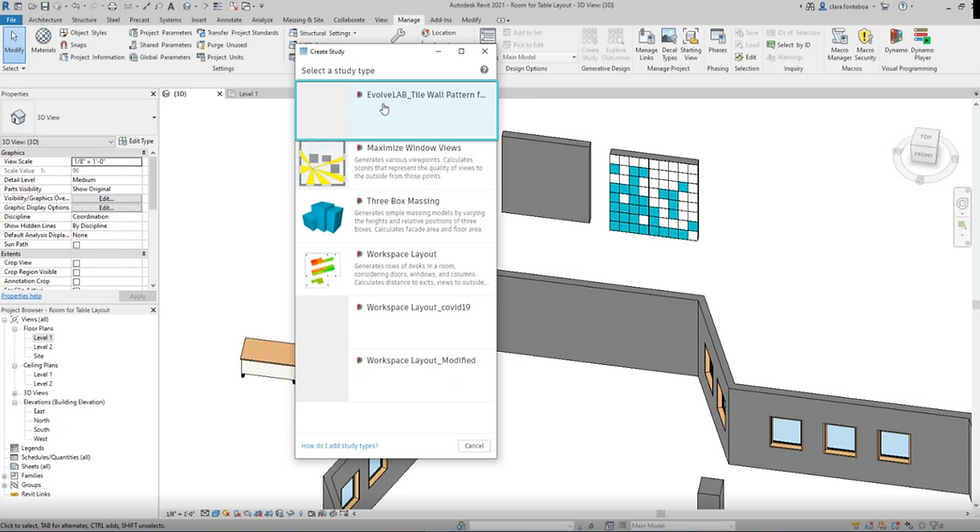
In today’s post we are going to be talking a look at how Dynamo is used for the Revit Generative Design Tool.
Generative Design is a broad term that means optimized outputs are created from a set of defined instructions and relationships. The Generative Design Tool in Revit is a feature in Revit 2021 that will create a number of design outputs based on inputs, constraints, and goals that are specified by the user. Revit uses Dynamo to run through different iterations of input values to generate ideal outputs based on the set goals. Within Dynamo, there are specific nodes used to characterize the parameters that are used in the Generative Design process, that will change the design outputs created by the tool in Revit.
Dynamo provides the framework for the Generative Design Tool in Revit, and it is important to understand the process that Dynamo is executing each time the tool is being used. Knowing how to work with a Dynamo Script made for Generative Design will further your understanding of how Generative Design works, it will also allow you to manipulate the way the Revit tool will approach the process. By adjusting the nodes and values in Dynamo that are linked to the Generative Design parameters, you can change the options that are presented once you run the Generative Design tool in Revit. In this way, Dynamo can be used to customize the Generative Design process in Revit to better fit specific needs.
Here, we have these different nodes here are specifically for the Generative Design Tool, shown here in purple. We are having to define whether the geometry gets created inside of Revit, or if it is not going to be created inside of Revit.

In this example, we are getting the surface and sending it to the Generative Design Tool to use the parameters in that surface.

As you can see there are many inputs here, but not all of them are needed as inputs inside the Generative Design Tool. To do this, right-click on your input and define it as input.

Here you can see that we are also defining it as an output because if you set it as an output here then you can use that value to become goal in a constraint within the settings that we put before doing this study but you can make watch nodes as outputs too. If you have a watch node like this

Now are going to be exporting this Dynamo Script, we can export this study to use the Revit Generative Design Tool.
I'm going to export this study to be using the Revit Generative Design Tool by going to the Generative Design tab in Dynamo and choosing Export for Generative Design.

Then you export for Generative Design within Export.

To note, you do not have to open Dynamo again to generate a solution within Revit. Meaning that you should go directly to the Revit Ribbon.
And use the Generative Design tool in the Revit Ribbon.
The way this is going to work by go to ‘manage’ and ‘create a study’

Then we are going to look at the created Dynamo Script from earlier.

Now, that we are here, we will start to utilize these inputs and outputs that will be selected to generate multiple options.
Now that we've seen an example of how Dynamo functions as the backbone for this Generative Design Tool within Revit, our next posts are going look into how to actually use this tool in Revit itself. If you would like to watch this happening in real-time, please watch the video below, and subscribe to the EvolveLAB YouTube page if you would like more content like this!

.png)
